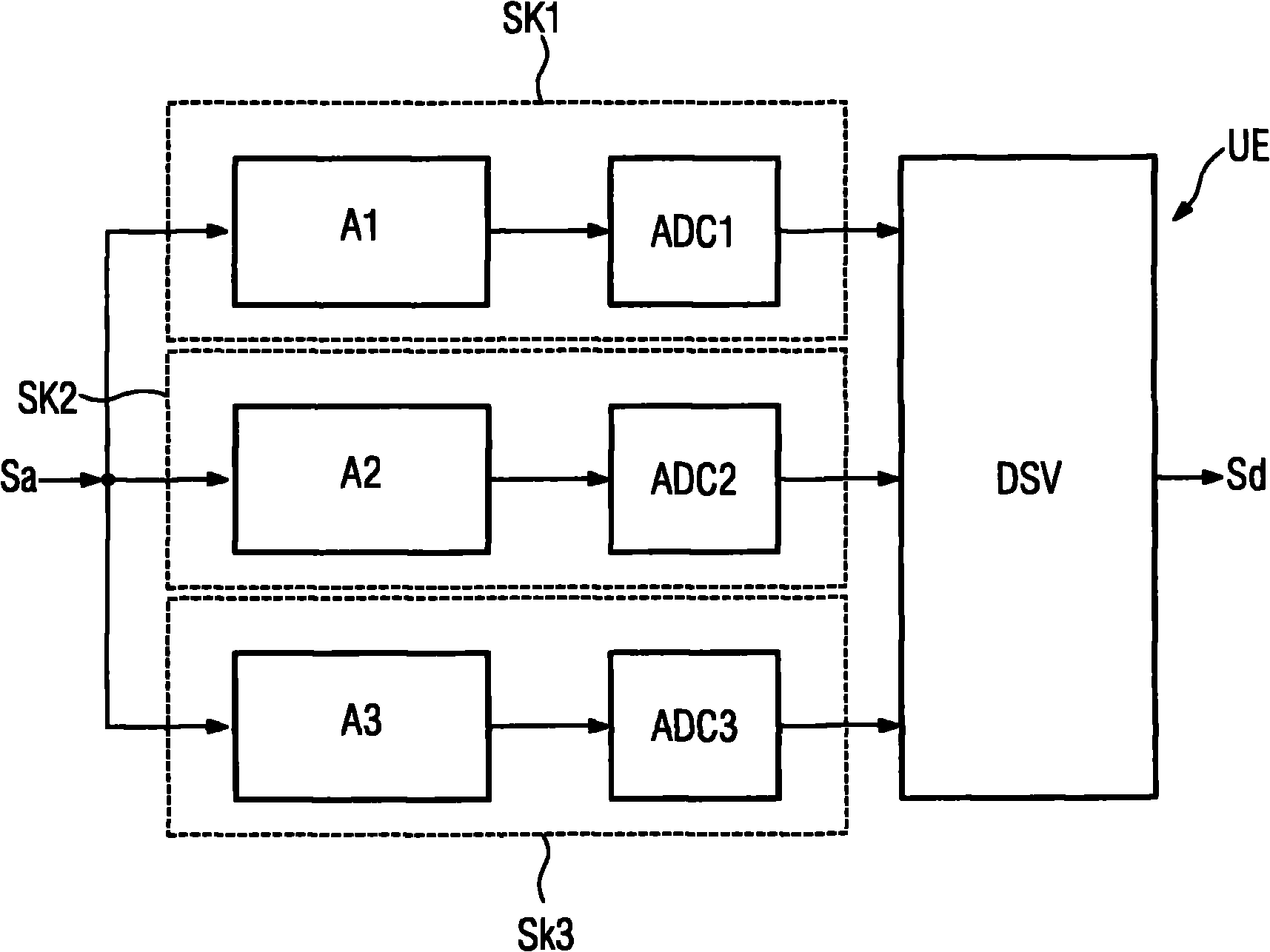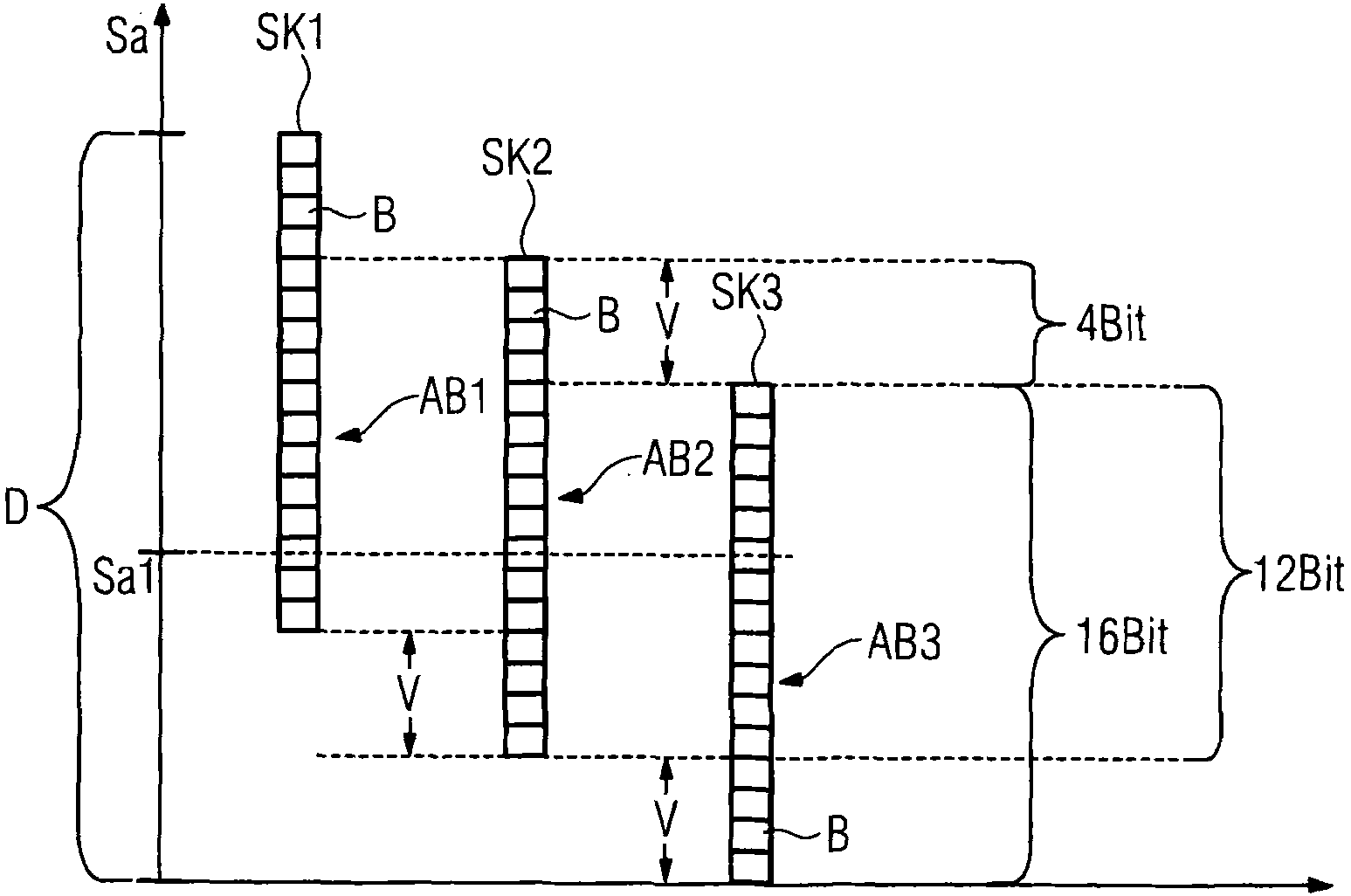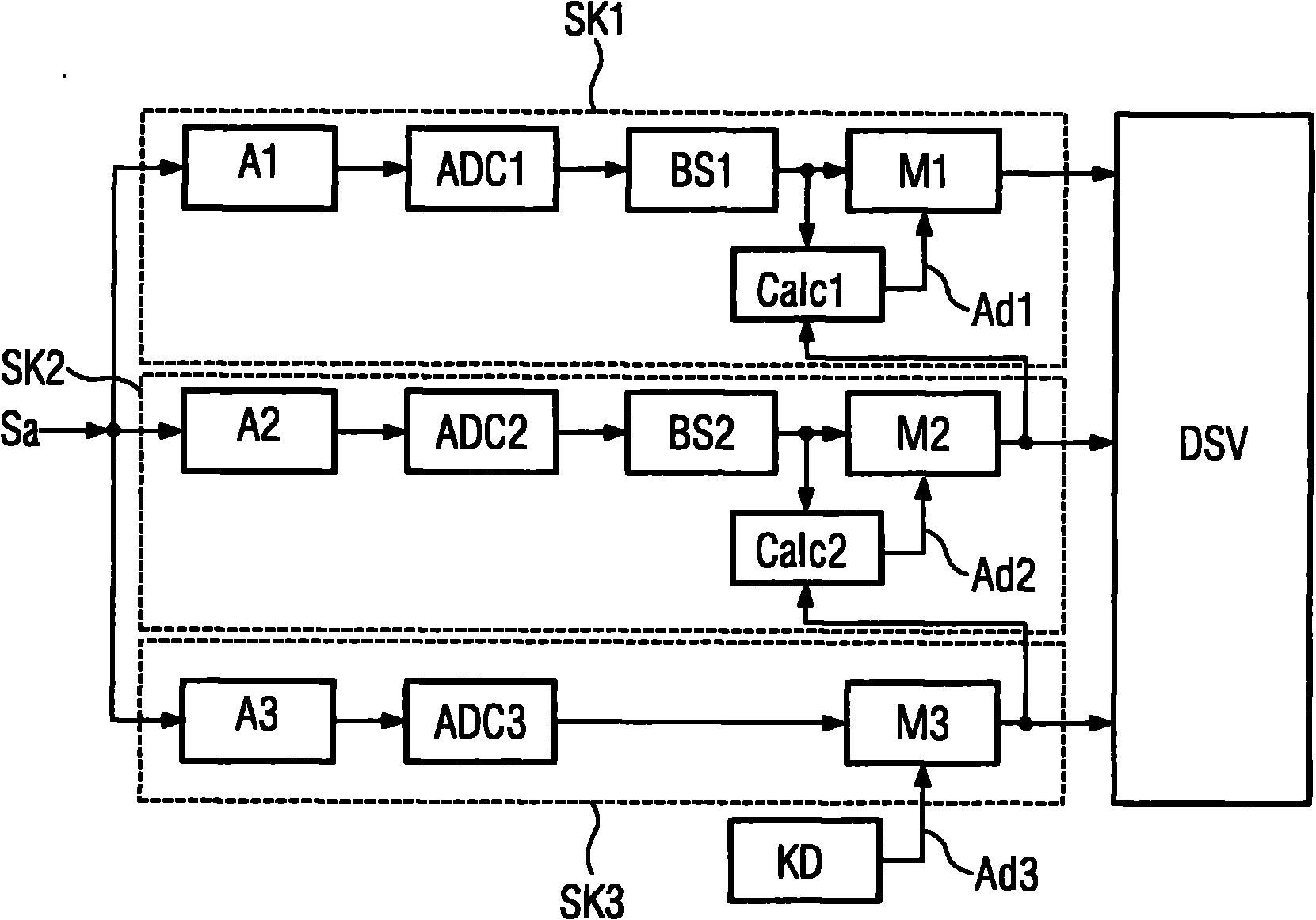Method and device for digitizing an analog electrical signal and method for digitizing
An electrical signal and signal technology, applied in the direction of analog-to-digital converter, analog-to-digital conversion, electrical components, etc., can solve the problems of complex and laborious, inverse operation, difficult temperature compensation, etc.
- Summary
- Abstract
- Description
- Claims
- Application Information
AI Technical Summary
Problems solved by technology
Method used
Image
Examples
Embodiment Construction
[0021] figure 1 A block diagram of a device for digitizing an analog electrical signal Sa is shown. The device has a plurality (here three) of sub-channels SK1 , SK2 , SK3 connected in parallel, to which the signal Sa is simultaneously applied. The signal Sa is then amplified in each subchannel SK1 , SK2 , SK3 (signal amplification section A1 , A2 , A3 ) before the signal is supplied to the input of the AD converter ADC1 , ADC2 , ADC3 . The output values of the AD converters ADC1 , ADC2 , ADC3 then enter a common digital signal processor DSV, which receives the values (receiver UE) and forms and outputs the total digital value Sd therefrom.
[0022] The AD converters ADC1 , ADC2 , ADC3 are here identical in each case in the exemplary embodiment (but it is also possible to use different AD converters in each sub-channel SK1 , SK2 , SK3 ).
[0023] The amplitude of the signal Sa is within the total amplitude range (total dynamic range) D, and D is 24Bit. When the resoluti...
PUM
 Login to View More
Login to View More Abstract
Description
Claims
Application Information
 Login to View More
Login to View More - R&D
- Intellectual Property
- Life Sciences
- Materials
- Tech Scout
- Unparalleled Data Quality
- Higher Quality Content
- 60% Fewer Hallucinations
Browse by: Latest US Patents, China's latest patents, Technical Efficacy Thesaurus, Application Domain, Technology Topic, Popular Technical Reports.
© 2025 PatSnap. All rights reserved.Legal|Privacy policy|Modern Slavery Act Transparency Statement|Sitemap|About US| Contact US: help@patsnap.com



